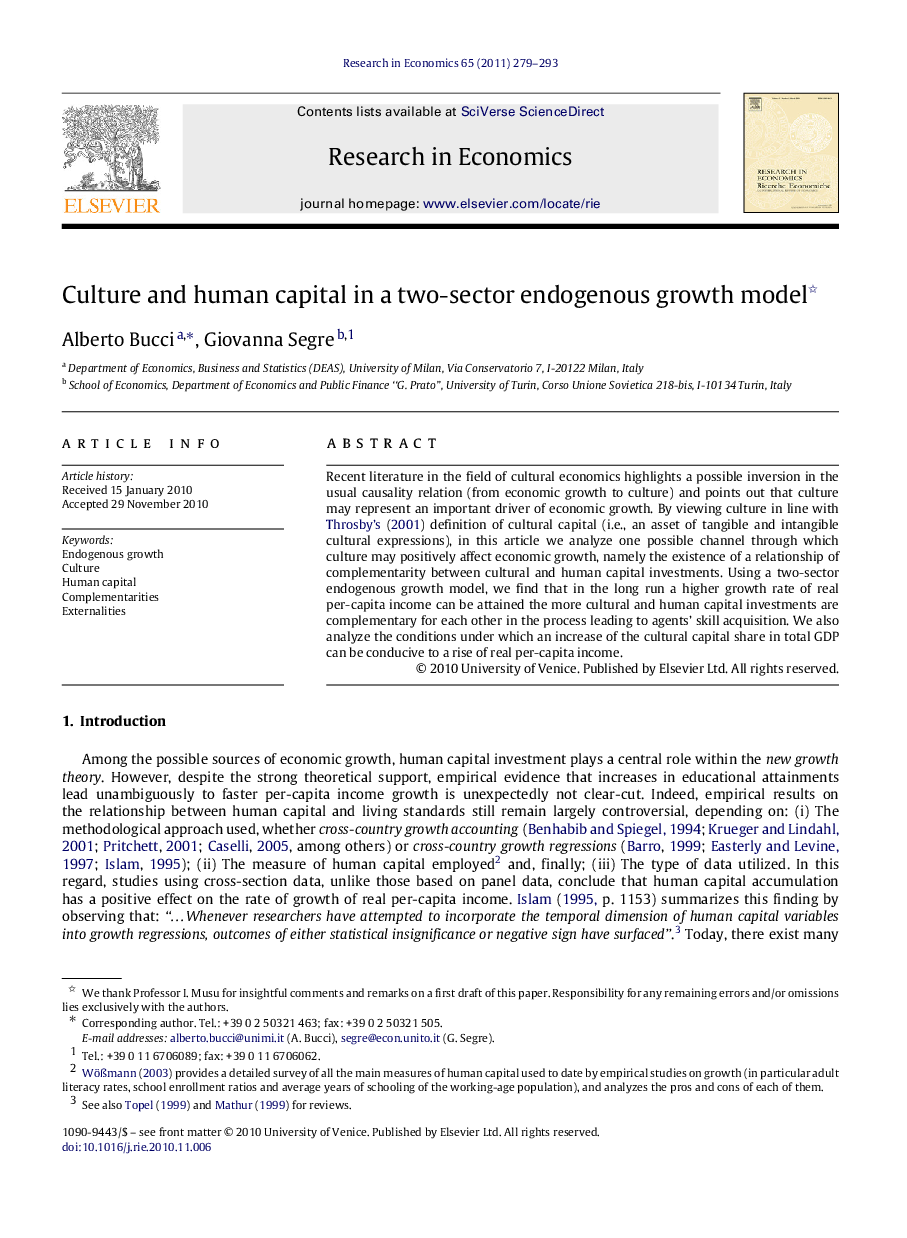| Article ID | Journal | Published Year | Pages | File Type |
|---|---|---|---|---|
| 984461 | Research in Economics | 2011 | 15 Pages |
Recent literature in the field of cultural economics highlights a possible inversion in the usual causality relation (from economic growth to culture) and points out that culture may represent an important driver of economic growth. By viewing culture in line with Throsby’s (2001) definition of cultural capital (i.e., an asset of tangible and intangible cultural expressions), in this article we analyze one possible channel through which culture may positively affect economic growth, namely the existence of a relationship of complementarity between cultural and human capital investments. Using a two-sector endogenous growth model, we find that in the long run a higher growth rate of real per-capita income can be attained the more cultural and human capital investments are complementary for each other in the process leading to agents’ skill acquisition. We also analyze the conditions under which an increase of the cultural capital share in total GDP can be conducive to a rise of real per-capita income.
Research highlights► We investigate the role of investment in art and culture in fostering economic growth. ► Following the new growth theory, a two-sector endogenous growth model is designed. ► The more culture and education are complementary, the higher economic growth is. ► We show the conditions for an increase in cultural capital to rise per-capita income.
